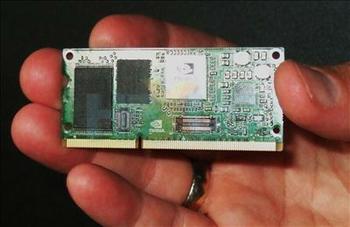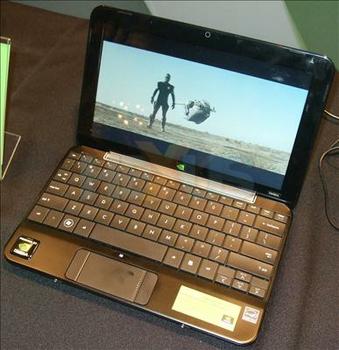This time last year, general manager of NVIDIA's mobile business Michael Rayfield introduced the world to the company's Tegra SoC (system on a chip), and quickly declared war on Intel's Atom.
Fast forward some 365 days, and Intel's Atom prevails whilst NVIDIA's Tegra has gone seemingly unnoticed by consumers. Nonetheless, NVIDIA's back for another COMPUTEX conference and this time it's sending out a clear message to consumers and competitors alike - Tegra's still coming, and it has the potential to power the systems used by billions of soon-to-be users.
Both Michael Rayfield and NVIDIA CEO Jen-Hsun Huang were on hand to deliver the message, and amid the usual company gloating, the promise of Tegra shone bright. Before we move on, though, let's have a quick recap on what Tegra actually is.
Tegra's a small and low-power system-on-a-chip that promises to power the mobile devices of the future. The entire chip, pictured below, features eight individual processors - consisting of ARM 11 and ARM 7 processor cores, a GeForce-based GPU, a 2D engine, a HD video encoder, a HD audio encoder, and audio and imaging processors, too.
Built from the ground up - following five years of development and an investment in the region of $500 million - the eight-processor design allows each to be enabled and used only when required. NVIDIA reckons it's building Tegra with a philosophy of using no power at all, and as ludicrous as that sounds, they're coming quite close with Tegra said to consume less than half a watt by using only the required processors at the required time.
Despite its tiny power footprint, the device can still output full-HD media courtesy of its GeForce-based GPU, offering more visual power-per-watt than we're used to seeing. Put it in a system with a nine-cell battery, and NVIDIA reckons you'll get ridiculous amounts of battery life - it's currently quoting 25 days of music playback. Yes, days, not hours. That's literally portable heaven, and NVIDIA hopes Tegra will combine the best of mobile phones and netbooks.
The theory is that Tegra-based netbooks will be able to run for days, without the need to go into standby. Like mobile phones, they'll always be on and ready for action - and NVIDIA's consequently making deals with network operators across the globe, who it hopes will help sell Tegra-based systems with 3G contracts.
It won't be stopping at netbooks, either. With Tegra's minuscule dimensions, NVIDIA reckons the chip can bring computing power to just about anything - from home phones to toasters, cars, TVs, photo frames and... well, you get the idea.
So what's the drawback? Well, there is one worth noting - Tegra's ARM processor cores aren't x86 compatible, and Tegra-based systems are consequently unable to natively run common x86 applications such as Microsoft's Windows XP or Windows 7.
But is it really a problem? NVIDIA might be facing a tough sell in the face of growing Windows 7 hype, but on a portable device where media and web access is paramount, x86 software might not be missed. We've had a play with a number of Tegra-based systems - NVIDIA had 12 on display - and we've found the Windows CE-based operating system used by many to be sufficient. More importantly, Tegra's surprising grunt made light work of web browsing and HD movie playback.
One such device, the Mobinnova Elan, looks very much like your traditional netbook and features an 8.9in screen. Unlike the Atom-based options, however, it shouldn't require daily charging.
We reckon there's plenty of potential in Tegra-powered systems, and though there's no mention of pricing, they could be hugely popular in emerging markets. On the other hand, potential and success don't always go hand in hand - we'll have to wait until we see the consumer reaction, and that'll happen later in 2009 when the first Tegra-based systems start to ship.
Looking ahead, NVIDIA's roadmap suggests Tegra 2 will arrive in 2010 and offer four times the performance of the current Tegra parts. That'll be followed swiftly by Tegra 3 in 2011.
On a related note, we asked if there was any truth to the rumours suggesting that Microsoft's Zune HD is powered by NVIDIA's Tegra. Michael Rayfield would neither deny or confirm the speculation.









